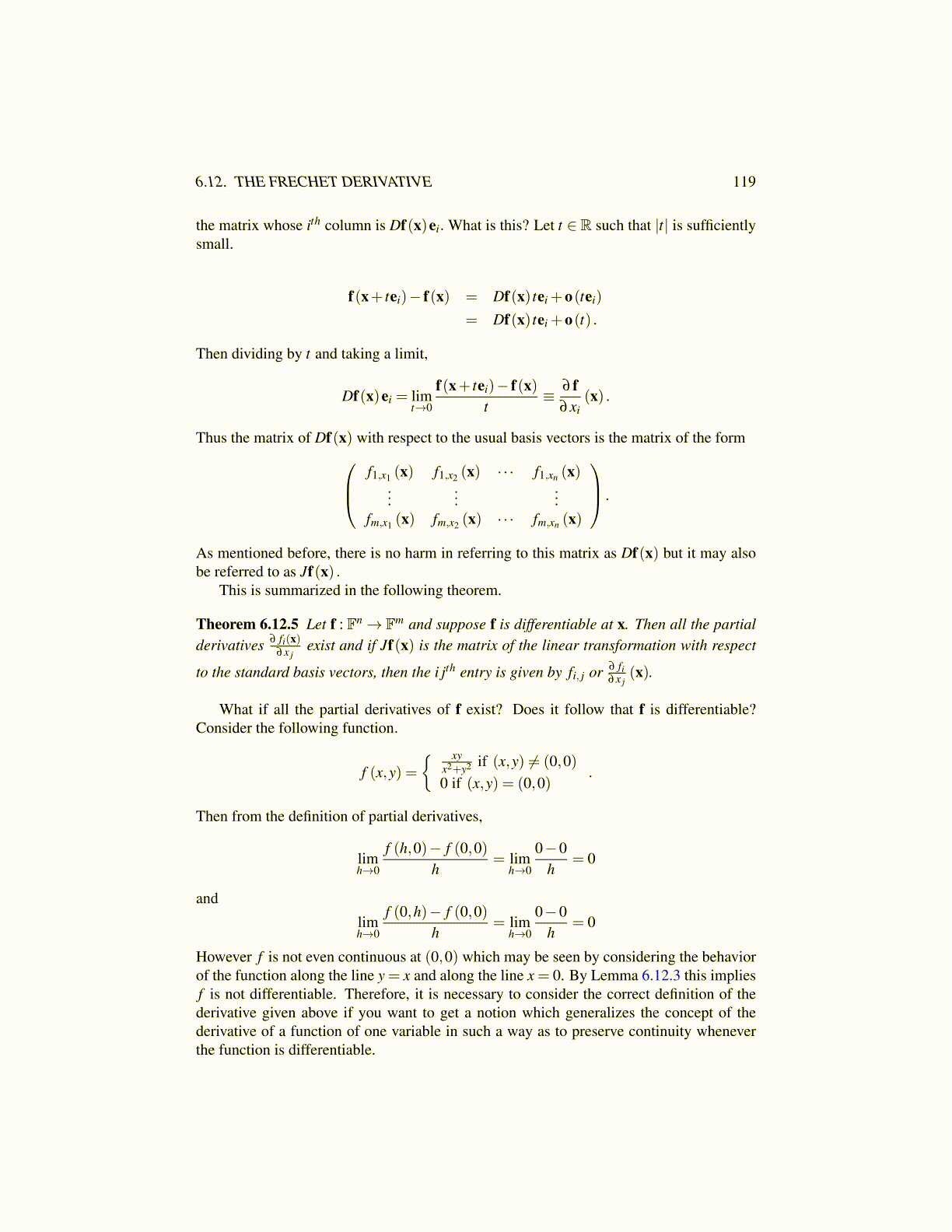
6.12. THE FRECHET DERIVATIVE 119
the matrix whose ith column is Df(x)ei. What is this? Let t ∈ R such that |t| is sufficientlysmall.
f(x+ tei)− f(x) = Df(x) tei +o(tei)
= Df(x) tei +o(t) .
Then dividing by t and taking a limit,
Df(x)ei = limt→0
f(x+ tei)− f(x)t
≡ ∂ f∂xi
(x) .
Thus the matrix of Df(x) with respect to the usual basis vectors is the matrix of the form f1,x1 (x) f1,x2 (x) · · · f1,xn (x)...
......
fm,x1 (x) fm,x2 (x) · · · fm,xn (x)
.
As mentioned before, there is no harm in referring to this matrix as Df(x) but it may alsobe referred to as Jf(x) .
This is summarized in the following theorem.
Theorem 6.12.5 Let f : Fn→ Fm and suppose f is differentiable at x. Then all the partialderivatives ∂ fi(x)
∂x jexist and if Jf(x) is the matrix of the linear transformation with respect
to the standard basis vectors, then the i jth entry is given by fi, j or ∂ fi∂x j
(x).
What if all the partial derivatives of f exist? Does it follow that f is differentiable?Consider the following function.
f (x,y) ={ xy
x2+y2 if (x,y) ̸= (0,0)0 if (x,y) = (0,0)
.
Then from the definition of partial derivatives,
limh→0
f (h,0)− f (0,0)h
= limh→0
0−0h
= 0
and
limh→0
f (0,h)− f (0,0)h
= limh→0
0−0h
= 0
However f is not even continuous at (0,0) which may be seen by considering the behaviorof the function along the line y = x and along the line x = 0. By Lemma 6.12.3 this impliesf is not differentiable. Therefore, it is necessary to consider the correct definition of thederivative given above if you want to get a notion which generalizes the concept of thederivative of a function of one variable in such a way as to preserve continuity wheneverthe function is differentiable.